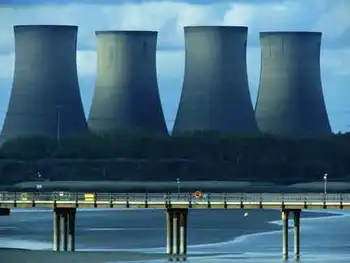DTE looks to Fermi 2 design
The utility said it will opt for the "Economic Simplified Boiling Water Reactor," a General Electric/Hitachi design that is attracting the interest of other large utilities and is said to be cheaper and safer than other designs.
"We are not in a position to commit to build the plant at this point, but we had to make this selection as part of the application process," said John J. Austerberry, a DTE spokesman.
"We selected that design based on several factors. One is that our analysis indicates that the cost for that plant over its full life cycle will be among the lowest of the advanced reactor designs that are available. It also makes extensive use of advanced safety features that rely on natural forces which contribute, to some extent, to its lower life cycle cost but also provide a certain level of reliability that's attractive as well."
Mr. Austerberry said another reason DTE is considering the design is because other utilities also are interested in it.
"Several of the largest nuclear utilities have selected that reactor design and we do see advantages in working with that group of plant owners, which includes Exelon, Dominion and Entergy.
"With the new standardized designs, companies that select the same plant have opportunities to gain efficiencies by working together on training, sharing operating experience, jointly managing supplies and components and sharing specialized equipment," Mr. Austerberry said.
He said he wasn't aware of any utilities that have placed an order yet, but several companies have selected the same design for the application process. The ESBWR isn't yet among the advanced reactor designs that federal regulators have approved, although it is in the review process.
According to the General Electric Energy Web site, the plant uses "passive design" features, essentially gravity-feed tanks and cooling systems to flood the reactor if there's a plant shutdown or power loss.
It says the plant has about 11 fewer systems than earlier reactors and 25 percent fewer pumps, valves and motors.
In a theoretical estimate of probabilities, GE asserts,"It is 11 times more likely for the largest asteroid near the earth to impact the earth over the next 100 years than for an ESBWR operational event to result in the release of fission products to the environment."
Mr. Austerberry said the plant would tie into the existing cooling water configuration that now exists at the Fermi 2 plant, a system of reservoirs and cooling ponds, but probably would use an additional single cooling tower, larger than either of the cooling towers now at the Fermi site.
DTE is considering building a $3 billion-plus plant with construction starting in 2014. But utility officials insist that Michigan needs to revamp its utility regulation laws before it can commit to such an investment.
Meanwhile, DTE officials applauded the U.S. Department of Energy's recent license application for the long-planned Yucca Mountain nuclear waste repository in Nevada.
"I commend this milestone action by the Department of Energy," said Anthony F. Earley Jr., DTE Energy chairman and chief executive officer. "In order for the country to continue to rely on the economic and environmental benefits of nuclear power, a national repository for used fuel must be developed."
He noted that, to date, Michigan residents have contributed $473.7 million to the federal government to fund construction and operation of a long-term disposal facility. DTE is planning to store nuclear waste from the Fermi 2 plant in casks at the plant site. The waste now is stored in underwater racks in a fuel pool in the plant's reactor building.
A Zogby poll found that 67 percent of Americans said they'd support construction of new nuclear plants in the U.S. A majority in all age groups supported the idea, with the exception of 18- to 24-year-olds. Only 47 percent of them supported the idea.
Related News

City officials take clean energy message to Georgia Power, PSC
ATLANTA - Savannah is among several Georgia cities that have led the charge forward in recent years to push for clean energy. Now, several of the state's largest municipalities are banding together to demand action from Georgia's largest energy provider.
Hearings regarding Georgia Power's Integrated Resource Plan (IRP) happen every three years, but this year for the first time the cities of Savannah, Decatur, Atlanta and Athens-Clarke and DeKalb counties were at the table.
"It's pretty unprecedented. It's such an important opportunity to get to represent ourselves and our citizens," said City of Savannah Energy Analyst Alicia Brown, the Savannah representative for…





